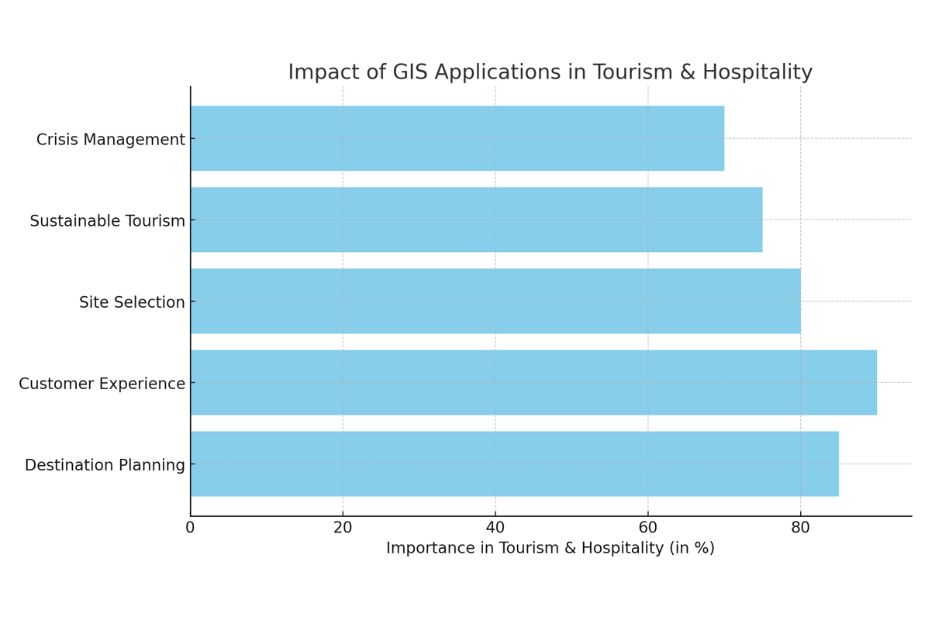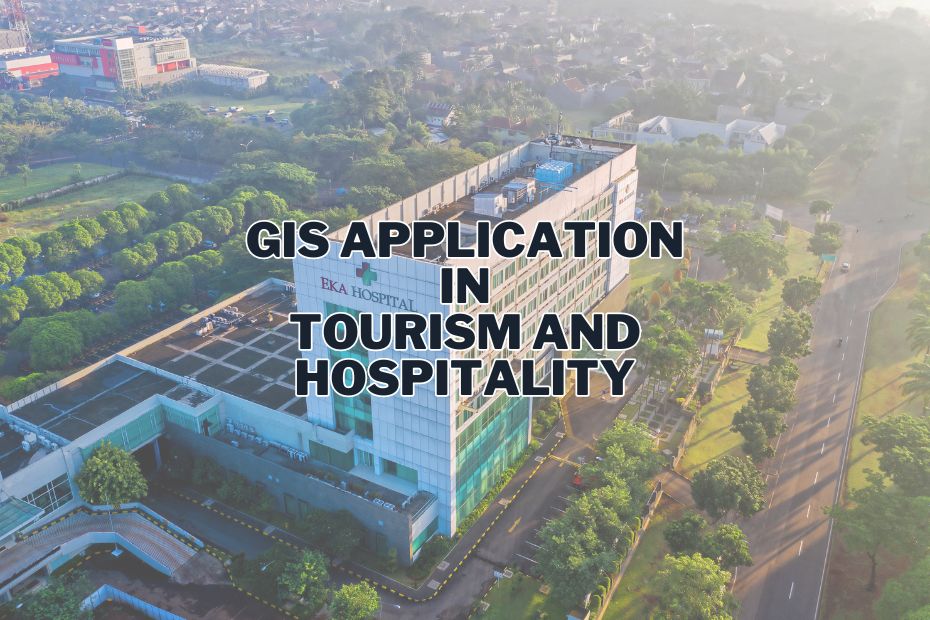The integration of Geographic Information Systems (GIS) in tourism and hospitality represents a significant shift in how these industries operate. GIS, with its powerful spatial data analysis capabilities, has become an indispensable tool for destination planning, marketing, and enhancing customer experiences. This article delves into the GIS Application In Tourism and Hospitality Industry, highlighting its impact on sustainable tourism development and the challenges it faces.
GIS Application In Tourism and Hospitality Industry
The advent of GIS technology in tourism has opened up new avenues for exploration and innovation. Here, we delve deeper into some of the advanced applications of GIS that are reshaping the tourism landscape.

Mapping the Journey: GIS for Destination Planning and Marketing
Understanding the terrain and its attractions is pivotal in tourism. GIS plays a critical role here, offering detailed maps and spatial analysis that enhance destination marketing. This technology allows for:
- Interactive Maps: Creating user-friendly, interactive maps for tourists, showcasing points of interest, routes, and local amenities.
- Market Analysis: Analyzing travel patterns and preferences to identify popular destinations and emerging trends.
Enhancing Customer Experience with GIS Data
The application of GIS extends beyond mere mapping. It enriches the travel experience by:
- Personalized Itineraries: Crafting tailored travel itineraries based on geographical data and traveler preferences.
- Event Planning: Assisting in event location selection, considering factors like accessibility, proximity to attractions, and spatial capacity.
GIS In Site Selection and Facility Management
Selecting the ideal location for hotels, resorts, and other hospitality facilities is a critical decision. GIS aids this process by providing detailed geographical insights, helping in identifying locations with high tourist footfall, accessibility, and scenic value.
Additionally, GIS is instrumental in facility management, enabling efficient resource allocation, maintenance scheduling, and overall operational optimization in the hospitality sector.
Promoting Sustainable Tourism Through GIS
Sustainability in tourism is a growing concern, and GIS offers solutions to promote eco-friendly practices. By analyzing spatial data, GIS helps in identifying areas of environmental significance, assisting in conservation efforts. It also aids in developing sustainable tourism models that minimize ecological impact while maximizing tourist satisfaction.
The Role of GIS in Trip Planning and Personalized Experiences
The advent of GIS has redefined trip planning in the tourism industry. Tour operators and travel agencies now harness GIS to create detailed, customized itineraries based on travelers’ preferences and past behavior. This data-driven approach not only enhances the personalization of travel experiences but also increases customer satisfaction and loyalty.
Interactive Maps and Real-Time Information
Interactive maps powered by GIS have become indispensable tools for tourists. These maps provide real-time information on local attractions, weather conditions, traffic updates, and more, allowing travelers to make informed decisions and explore destinations more freely and safely.
GIS-Driven Site Selection for Hotels and Resorts
Hotel and resort development greatly benefits from GIS in choosing the optimal site. GIS tools analyze various factors such as proximity to popular attractions, accessibility, environmental impact, and demographic trends. This strategic use of GIS ensures that new developments are positioned for maximum profitability and customer appeal.
Effective Resource Management
GIS also plays a critical role in the effective management of resources in the hospitality industry. By analyzing spatial data, hotels and resorts can optimize their operations, from energy management to staff allocation, leading to improved efficiency and reduced operational costs.
Eco-Tourism and Conservation Efforts
GIS is instrumental in promoting eco-tourism and conservation:
- Wildlife Tracking: Utilizing GIS to monitor wildlife movements, helping in the conservation efforts and creating responsible wildlife tourism experiences.
- Eco-Friendly Route Planning: Designing eco-friendly travel routes that minimize environmental impact.
Overcoming Challenges in GIS Implementation
Implementing GIS in tourism and hospitality is not without its challenges. Key among these are ensuring data privacy, managing the high costs of GIS technology, and training staff to effectively use these systems. Addressing these issues is crucial for the successful integration of GIS in these sectors.
GIS for Crisis Management in Tourism
GIS plays a critical role in crisis management within the tourism sector. In events such as natural disasters or pandemics, GIS can be used for evacuation planning, tracking the spread of hazards, and efficiently reallocating resources to ensure tourist safety.
Disaster Response and Recovery
GIS enables quick and efficient disaster response and recovery efforts in tourist areas. By providing real-time data on affected areas, GIS helps in the efficient deployment of emergency services and resources, minimizing the impact on both tourists and the industry.
The Road Ahead: GIS and Future Technological Integration
The future of GIS in tourism and hospitality is bound to intersect with other cutting-edge technologies like Artificial Intelligence (AI) and Virtual Reality (VR). These integrations promise to deliver more immersive and personalized travel experiences, further pushing the boundaries of what’s possible in this dynamic industry.
Bridging Real and Virtual Worlds
Future applications might include:
- VR Tours: Combining GIS data with VR to offer virtual tours of destinations, providing a sneak peek into the travel experience.
- AI-Powered Recommendations: Utilizing AI to analyze GIS data, offering personalized travel suggestions and experiences.
Future Directions and Conclusion
As GIS technology continues to evolve, its applications in the tourism and hospitality industry will expand. We can expect to see more advanced location-based services, augmented reality experiences for tourists, and even more efficient operational models in hospitality management.
In conclusion, GIS is not just a tool for mapping and spatial analysis; it’s a comprehensive solution that, when integrated with other technologies, can revolutionize the tourism and hospitality industries. As we move forward, embracing these advancements will be key to staying competitive and providing exceptional experiences to tourists worldwide.
FAQs:
What is GIS, and how is it used in tourism?
GIS is a technology that combines geographical data with information management tools to enhance experiences in tourism.
Can small businesses in tourism use GIS?
Absolutely! GIS is scalable and can benefit businesses of all sizes.
How does GIS improve customer experience in hospitality?
GIS helps in personalizing guest experiences, from room preferences to travel recommendations.
What are some challenges in implementing GIS?
Challenges include data management and technical expertise, but these can be overcome with the right approach.
Are there any privacy concerns with using GIS in tourism?
Yes, but with proper data handling and privacy policies, these concerns can be addressed.
